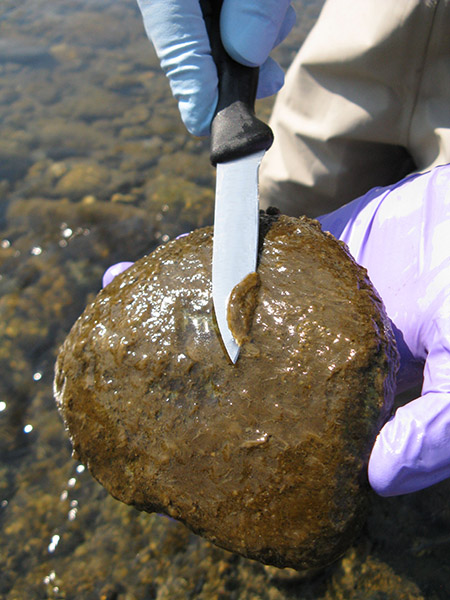Toxics source assessments
Environmental forensics for toxic contaminants
Our Environmental Assessment Program's Toxics Studies Unit (TSU) works with the Manchester Environmental Laboratory and other partners to identify the sources of toxic contaminants in Washington’s rivers and lakes. We use the chemical fingerprint in fish, insects, surface and ground waters, and sediments to decipher the possible location of contaminant sources impacting the health of Washington’s fresh waters.
Source assessment projects
Source assessment projects are initiated when a waterbody has been classified as impaired through water quality assessment. These projects are the first step toward actions to reduce the inputs of toxics to Washington’s fresh waters. These projects often span multiple years, and our scientists work in collaboration with other agencies, municipalities, and research entities.
Chemicals of concern for ongoing or recent source assessments are generally legacy or historic contaminants that persist in the environment. For example, polychlorinated biphenyls (PCBs) — a group of industrial chemicals banned in 1979 — are a ubiquitous environmental contaminant today due to their chemical properties. We also track sources of new and ongoing contaminants, such as polybrominated diphenol ethers (PBDEs – flame retardants), and per and polyfluoroalkyl substances (PFAS – found in firefighting foam and household products) that are often associated with urban centers and wastewater.
Ongoing studies by our scientists are used to better understand the sources and impacts of toxic chemicals in Washington’s waters while contributing to the broader scientific understanding of sources and transport of these chemicals in the environment.
Scientists collect algae, also called "biofilm," from streams and rivers to assess sources of toxic chemicals.
Source assessment methods
To determine the sources of toxic chemicals scientists collect environmental samples throughout an area of interest. The methods and equipment used in this work include:
- Water sampling
- Semipermeable membrane devices (passive water samplers)
- Sediment monitoring
- Biofilm sampling
- Invertebrate collection
- Fish collection
- Atmospheric deposition
We continue to research and test new approaches to measuring and monitoring toxics in the environment. See our publication index for reports on newer methods being tested. Access our Standard Operating Procedures for guidance on sampling methodologies.
See the short video below, our blog article, and this scientific paper from our scientists to learn more about the use of biofilm in source assessment.


